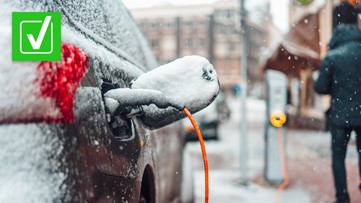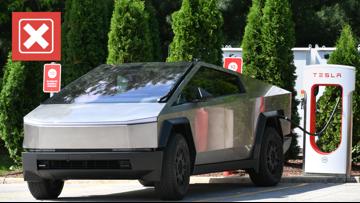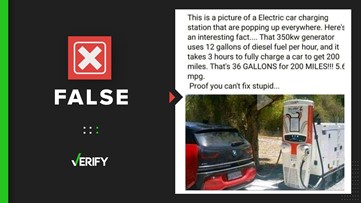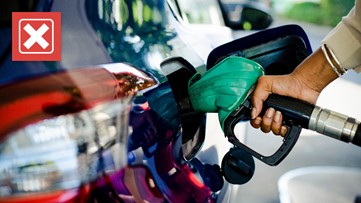Hurricane Helene made landfall as a fast-moving category 4 hurricane, inundating Florida’s Big Bend region with record storm surge before wreaking havoc inland with record flooding in the southern Appalachians.
After Helene hit the region, people on Facebook shared a photo of a destroyed, burned-out vehicle. The people sharing the posts claimed electric vehicles and bicycles “explode like a bomb” when they get submerged with saltwater, and that the photo is an example of what could happen.
Several VERIFY readers sent us questions asking if these posts are true.
THE QUESTION
Can electric vehicles catch fire after being submerged in floodwaters?
THE SOURCES
THE ANSWER
Yes, electric vehicles can catch fire after being submerged in floodwaters. While rare, experts suggest EV drivers have their car inspected before operating it if the vehicle has been submerged.
WHAT WE FOUND
An electric vehicle may catch fire immediately or weeks after being submerged in floodwater, although incidents of this happening are rare.
There isn’t a fire risk from driving an electric vehicle in the rain or through a puddle on the road. The vehicle must be in waters high enough to submerge the battery.
Electric vehicles are designed with safety features to withstand some level of water exposure, officials in Georgetown County, South Carolina, say. Their sealed battery packs are designed to be water resistant, but submersion can damage that seal.
But despite those safety features, an electric vehicle’s battery and other parts can still be damaged when immersed in water or exposed to it for an extended period of time. The water damage can then cause the battery to short circuit or overheat itself over time, which can cause it to catch fire.
In 2022, seawater flooding from Hurricane Ian impacted 3,000 to 5,000 electric vehicles in various ways, according to a report from the Idaho National Laboratory. About 36 of the vehicles caught on fire.
Several of those electric cars caught fire while being towed on flatbed trailers, according to the report. Idaho National Laboratory says the vehicle fires were due to thermal runaway, which is an uncontrollable increase in temperature that can occur in batteries damaged by floodwaters.
The lithium ion batteries present in electric vehicles can catch fire weeks after battery damage, another National Highway Traffic Safety Administration (NHTSA) report says.
Electric vehicle fires can also be caused by electrical short circuits, officials in Georgetown County, South Carolina, warned residents ahead of Hurricane Debby’s landfall in the state in August.
Tesla recommends that its customers move their vehicles to higher ground if flooding is in the forecast. If the vehicle does get submerged in floodwaters, Tesla warns its customers not to operate their vehicle until an authorized shop has inspected it. Tesla also says vehicles that were submerged should be moved at least 50 feet away from structures and other combustible materials until they have been inspected.
Similarly, AutoZone’s advice for flooded combustion engine cars is to not operate them until they’ve been removed from the water, inspected and repaired. Floodwater can damage the engine, battery and many individual parts of a gas-powered vehicle. Problems caused by the damage can manifest days, weeks or even months after the car was flooded, State Automobile Mutual Insurance Company says.










